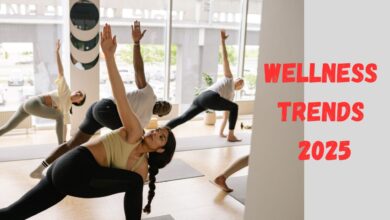
Considered the single most important practice for maintaining youthful skin: the daily application of sunscreen and taking other protective measures, like wearing a hat. All the other things you can do for your skin pale in comparison, especially for those with pale skin. Up to 90 percent of visible facial ageing among people with lighter skin tones is due to exposure to sunlight. Those with darker skin are relatively protected due to their built-in melanin sunscreen, but they’re still affected. Sun damage in darker skin tends to be less about wrinkles and more about pigmentation issues, such as uneven skin tone, dark patches, and small dark bumps on the face.
Either way, dermatologists now agree that there is nothing more important to slow the signs of ageing than to protect your skin from the sun. To illustrate, here’s a dramatic photo of a trucker who spent decades getting more sun on the left side of his face through his driver’s side window, reminiscent of a Batman villain.
Factors Influencing Skin Aging
Factors like sun exposure and smoking can make us look up to 11 years older. Compare that to extensive cosmetic surgery—a face lift and a neck lift, and removing excess skin from both the upper and lower eyelids, and a forehead lift, which combined, can make us look about eight years younger. So, a healthy lifestyle may work even better.
How to Protect Your Skin
Protecting your skin from the sun should be a lifelong endeavor. This can involve applying sunscreen, wearing sun-protective clothing, hats, and sunglasses, and avoiding direct sunlight during the peak hours of 10:00 a.m. to 4:00 p.m. and instead seeking shady, covered areas. Sunbathing is frowned upon, even with sunscreens like zinc oxide or titanium dioxide that offer broad-spectrum protection against both UVA and UVB rays. We now know that other wavelengths, such as near infrared, that are not covered by sunscreens also contribute to skin ageing.
The Risks of Tanning
Men and women who use tanning beds appear significantly older than those who don’t, and white women who sunbathe appear years older than they actually are, similar to what is seen with smoking. UVA rays are primarily responsible for skin ageing, whereas UVB are the rays that cause sunburn, but a broad-spectrum sunscreen covering both is recommended since both types of UV contribute to cancer risk.
Choosing the Right Sunscreen
To prevent skin cancer, the American Academy of Dermatology recommends sunscreen with an SPF of 30 or higher, but an SPF even as low as 15 can help prevent skin ageing. How do we know? Because it’s been put to the test. Despite the widespread belief that the use of sunscreen would prevent skin ageing, all we had was data on hairless mice. That is, until ten years ago.
Scientific Evidence
Nine hundred adults were randomized either to years of daily sunscreen use or to continue with their own discretionary use. (It was considered unethical to withhold protection by giving people placebo sunscreen.) In the end, 77 percent in the recommended daily sunscreen group were applying sunscreen at least three to four days per week compared with only 33 percent in the discretionary use group. Would that be enough of a difference to make a difference? Yes, there was significantly less skin ageing in the instructed daily use group. In fact, they suffered no detectable increase in skin ageing over the four-and-a-half-year study. The researchers concluded “Regular sunscreen use retards skin ageing in healthy, middle-aged men and women.”
Also Read:Arthritis Management and Prevention
Conclusion
In conclusion, the most crucial thing you can do to keep your skin looking young and avoid premature ageing is to shield it from the sun. Using sunscreen regularly, along with other protective actions, has great advantages and is backed by science.




